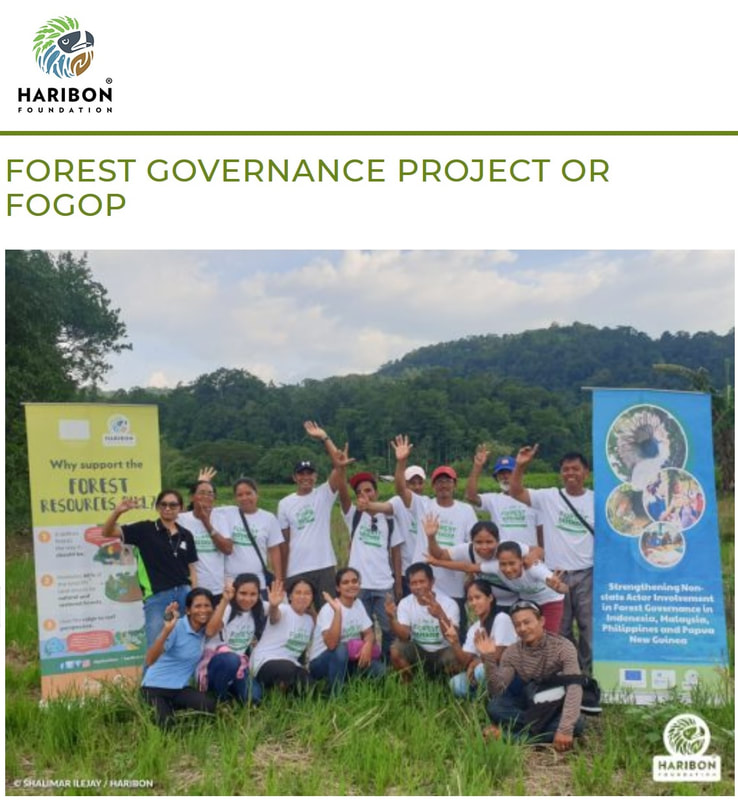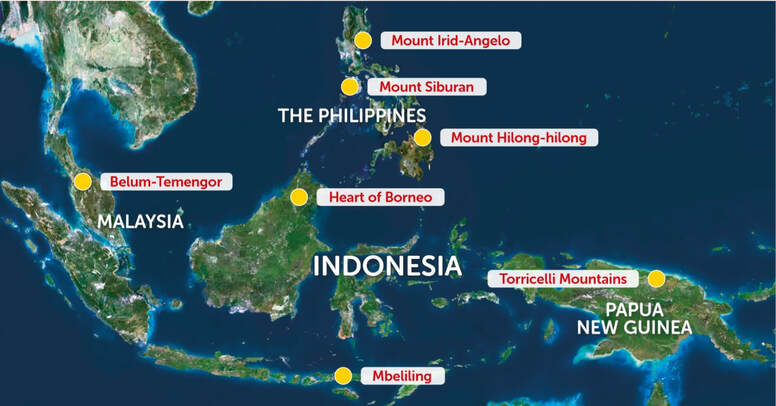historyHatched in 1972, the Haribon Foundation and the individuals it trained and nurtured were instrumental in the formation of other environmental organizations in the country.
The niche of Haribon – developed over 45 years of scientific excellence and socio-economic research – is biodiversity conservation. The Foundation’s natural and social scientists continue to work with people from all levels of governance to develop sustainable resource management strategies. The name Haribon was coined from Haring Ibon or the Philippine Eagle. It was so named because the existence of the king of birds is a perfect barometer of the state of our forests. Learn more about Haribon’s history here. vision & missionHaribon transforms every individual into a biodiversity champion, and advocates biodiversity conservation through building constituencies, empowering communities and applying multi-disciplinary research.
|
|
the landscape
|
Mt. Hilong-Hilong
Mt. Hilong-Hilong has approximately 8,000 km2 of forest cover, and contains one of the few remaining old growth or primary forests in the country with endemic flora and fauna species. This site is a critical watershed and highly biodiverse. Mt. Hilong-Hilong belongs to the so-called timber and mineral corridor of Mindanao as a repository of the largest ore deposits and tree plantation areas in the Philippines. There are at least 52 mining companies that are either in application or in exploration stages around Mt. Hilong-Hilong. Mt. Hilong-Hilong is considered an IBA In Danger, which means that it’s under immediate threat from damage or destruction and in need of urgent attention. |
Mts. Irid-Angelo
The Sierra Madre forests are extremely important in providing ecosystem services on which dense human populations depend. Mt. Irid-Angelo serves as a major watershed for the Pampanga River Basin, Angat Dam, and La Mesa Dam, and a major power and water source for Metro Manila. Covering around 135,527 ha, this tract of old-growth forest is among the few remaining forest blocks in the country. These two neighbouring mountains hold environmental and cultural values, being havens for the critically-endangered Philippine Eagle in Luzon and the ancestral home of the Dumagat-Remontado indigenous peoples. Mts. Irid-Angelo also host the Kaliwa Watershed Forest Reserve, a portion of which is declared as a National Park and Wildlife Sanctuary or Game Refuge. Kaliwa Watershed has about 28,000 ha of forest, ancestral, and agricultural lands. Mts. Irid-Angelo is considered an IBA In Danger, which means that it’s under immediate threat from damage or destruction and in need of urgent attention. |
Mt. Siburan
The forests of Mt. Siburan are considered the largest tract of lowland forest in Mindoro. Its overlap with a penal colony bestows protection to some extent, as access to the forest is limited. The site is adjacent to the patchy forests on the limestone ridge running north from Mt. Malpalon. It is generally characterized as a closed canopy forest with trees up to 25 m or more, and a relatively open forest floor. The site is home to numerous critically endangered species, but is faced with deforestation, invasive species, hunting, and timber harvesting. Mt. Siburan is considered an IBA In Danger, which means that it’s under immediate threat from damage or destruction and in need of urgent attention. Source: BirdLife International |



